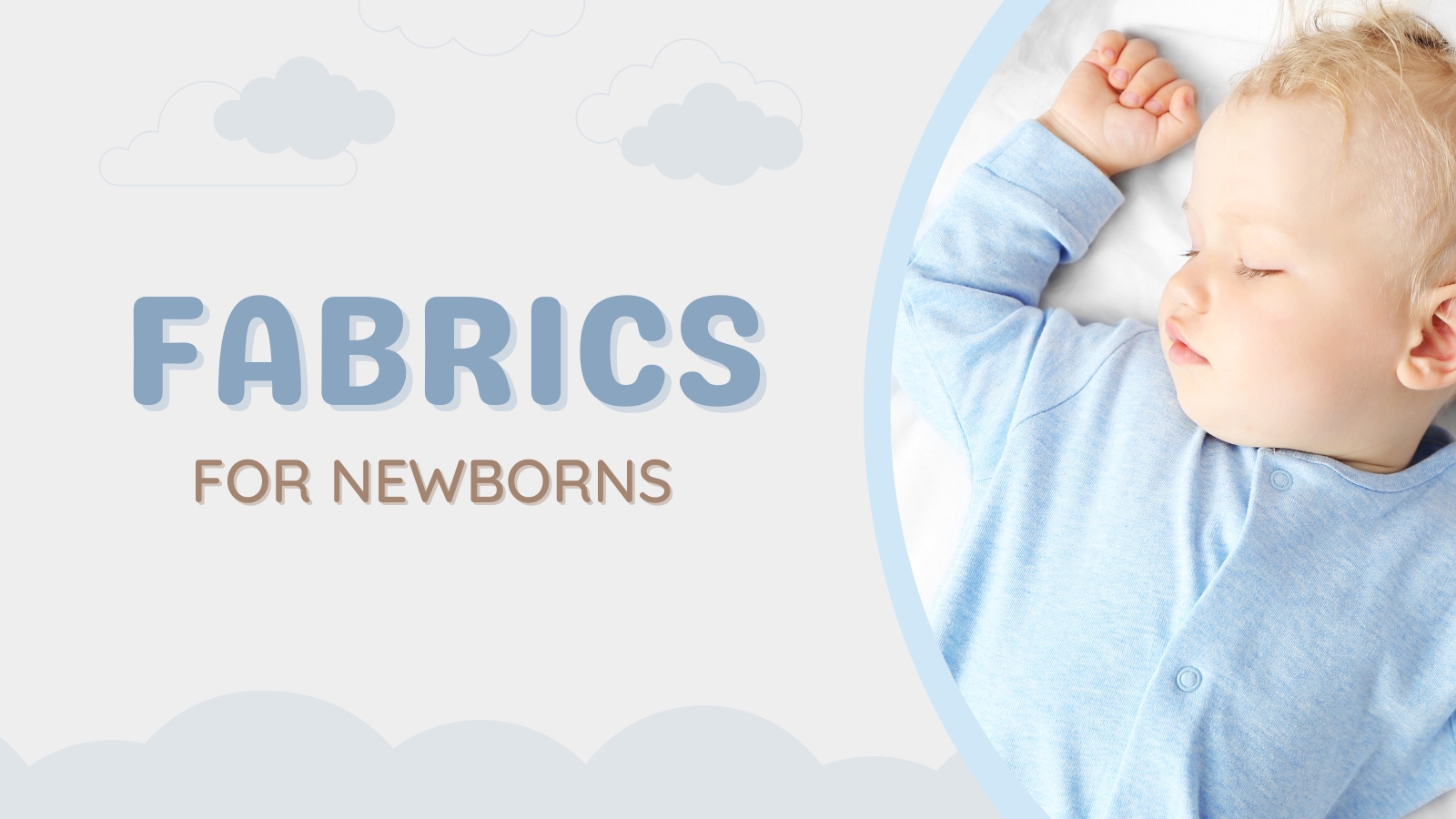Choosing the Right Fabrics for Newborn Clothing: [4 Breathable Fabrics]

Newborns have delicate and sensitive skin, so choosing breathable, gentle fabrics on the skin is essential. Look for natural fibers like cotton and bamboo.
Cotton muslin is one of parents’ favorite choices for newborn clothes and blankets because it is soft, durable, and breathable.
Breathable fabric helps regulate body temperature and prevents overheating, making it perfect for infants. You can test the breathability of a fabric by holding it up to light and seeing how much light passes through.
1. Gauze
Cotton is the fabric of choice for newborn clothing, blankets, towels, and anything else that will touch a baby’s skin. It’s soft, breathable, and doesn’t release particulates that can trigger irritation or allergies.
Cotton muslin is one of the most popular fabrics for baby clothing and accessories because it’s soft and gentle on a newborn’s sensitive skin. It’s also breathable and can help regulate your infant’s temperature, so they won’t overheat or get too cold.
Triple gauze is another option for baby clothing. It’s softer and fluffier than double gauze, making it even more comfortable for your little one. The fabric is also durable and can withstand repeated washings. It can be washed in cold or warm water and doesn’t require special soaps or detergents.
2. Jersey Knit
Jersey knit fabrics are very comfortable and stretchy, a major benefit when sewing clothes for newborns. They’re also breathable and keep babies cool and calm, which helps them relax and sleep better. They’re often made of silk, wool, rayon, or a combination of these materials. Wool jerseys are perfect for sweaters and jackets, while silk is used to make dresses and blouses. Rayon jerseys are lightweight and ideal for summer apparel, while wool blends with lycra and spandex provide more stretch and durability.
Linen is a natural fabric perfect for hot summer days as it helps the body regulate temperature so the baby doesn’t overheat. It’s also a great moisture absorber, keeping the baby dry day and night. Handkerchief linen is another great option for special occasions like christenings because it’s soft and light while maintaining good shape. It’s a semi-sheer fabric with a subtle texture that looks lovely in dresses and nightgowns.
3. Fleece
Parenthood is full of choices:
- What kind of bottle to use.
- What brand of diapers to buy.
- When to start solid foods.
But another important choice is the fabric for baby clothes and blankets.
Babies are most comfortable in soft and breathable fabrics, which help regulate body temperature and prevent overheating. Cotton muslin is one of the most popular fabric choices for newborns, as it is gentle and safe for sensitive skin. It also breathes well, making it a good choice for warm weather and activewear.
Fleece is a versatile fabric that can be used for all types of clothing and accessories. It is a good choice for cold weather and activewear and a great option for hats and mittens. Many types of fleece fabric are available, including wool-blend and Minky, soft and warm options. Some are also hypoallergenic, which is important for babies with sensitive skin.
You may like this
- 7 Tips to Keep the House Clean With a Newborn
- How To Care For Yourself When You’re Caring For A Newborn
- 8 Breathable Fabrics That Won’t Show Your Sweat — and 6 You Should Avoid
4. Bamboo
Bamboo is one of the most popular fabrics used in baby clothes, and it’s a good choice for newborn essentials like clothing, blankets, and swaddles. It has antibacterial properties that eliminate odors, and it’s hypoallergenic. It also helps keep the baby cool and comfortable while it wicks away excess moisture.
It’s breathable and smooth on babies’ skin, making it perfect for newborns with sensitive skin. It can help reduce the occurrence of eczema as it keeps skin from becoming itchy and red. Bamboo dries quickly, which can help prevent moisture buildup, a leading cause of rashes for babies.
There’s been a lot of controversy around the safety of bamboo fabric. Still, if a brand uses certified organic cotton and OEKO-TEX Standard 100 for their production facilities, it is safe for your baby. Look for brands that specifically say they use lyocell bamboo over bamboo rayon and check out their production process.
Resources:
Recommended For You
How to Feed Your Hungry Baby
Most Inside
Most Inside offers high-quality recommendations and valuable updates to enhance all aspects of your life, providing premium guidance and enriching experiences.




